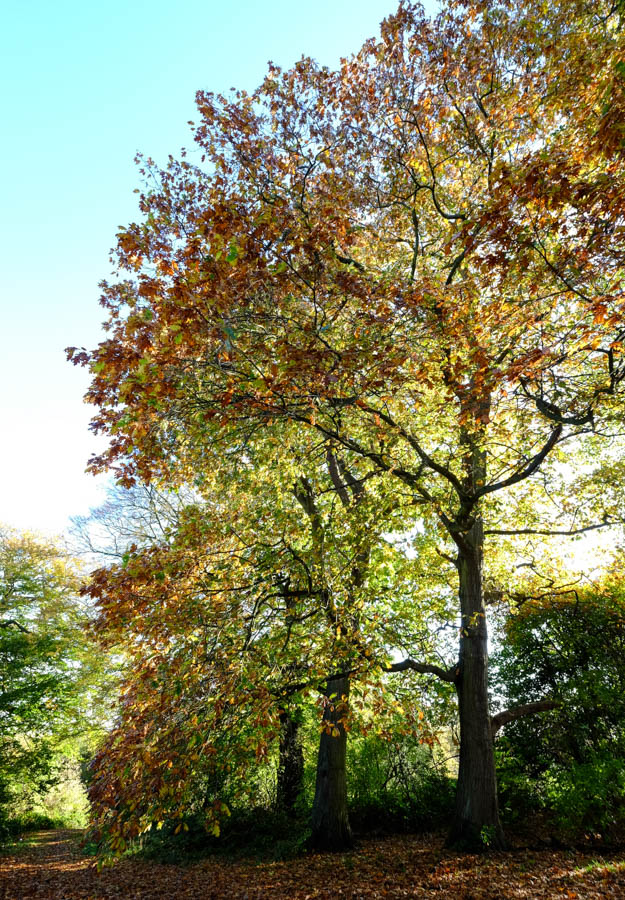Just to the north of the centre of Warwick lies one of the many Priory Parks of England. This one is a small green and wooded space squeezed between a footpath to the west, a road to the south and the Great Western railway line to Birmingham on its northern margin.
The priory is long gone, the private house that succeeded it dismantled many years ago and sold to an American. It is now resident in the Carolinas. Mature trees sit atop the highest point in the park with grassy slopes on all but one side, though deep tangles of brambles remind the visitor that this is not a manicured space. Exotic trees from the council’s former nursery dot the eastern and southern slopes; a deep wooded dell to the north is a remnant of the private house’s landscape; to the west a network of paths connect the park to the town.

But it is to the top of the park that I am drawn. A line of beech and oaks shelter a small grass oasis, behind which the brambles deter access from the dell, a couple of muddy paths being the only way through. Here one can sit and imagine silence, for Priory Park is not a quiet place. In summer, trees in leaf shield the town’s noise stilling it to a background murmur. In winter the wind pushes through bare branches and rustles the leaves on the ground, the sound competing with passing traffic and the deep thrum of passing freight trains. Periodically a jet bound for Birmingham airport banks above. Yet despite these sounds the park feels ridiculously peaceful and the bird song is never drowned out.

I sat here a few years back on a warm summer’s day, soon after our first lockdown, mesmerised as the wind moved the high wall of oak trees in front of me, an incessant swaying of brown limbs and green leaves, for once a sound to drown out all others. Though in the middle of a town, nobody passed by to break the spell and I sat contented with these living giants, remembering times past and contemplating a renewed future.

On the eastern edge of the oasis, slightly below the crown of the hill, stands a lone beech. It has seeded itself away from its neighbours almost unsociably so. Unswaying and firmly rooted, this beech seems different from the other trees in the park. Broader than it is tall, huge angular limbs reach out from its trunk whilst, higher up, a crazy jumble of branches looks for all the world like a tangle of wild hair. It is always last into leaf in the spring and the first to shed its leaves in autumn.

This Edward Scissorhands of trees appears to possess an almost human quality. Whichever way you approach the beech, those giant branches reach out in an offer of embrace. Approaching up the hill, the tree looks down kindly on you, one huge limb almost above your head. If you stand underneath its nearest neighbour, the beech shows its true glory, open armed and welcoming, skeletal in winter, deep sumptuous green in summer.


I visited this tree almost daily through our lockdowns. And having given it human qualities I liked to think of it looking down at this small fallible member of the human species, our superior world turned upside down by a virus. A reminder that we are but one other aspect of nature, not at the top of the food chain as we like to suppose, a species seeking solace in our fellow living things, finding connection and comfort within nature.

